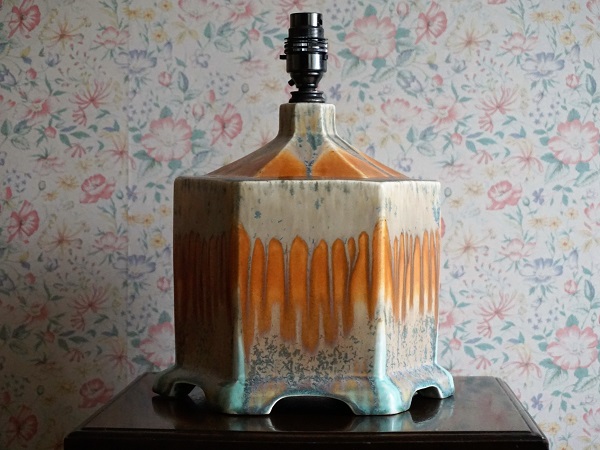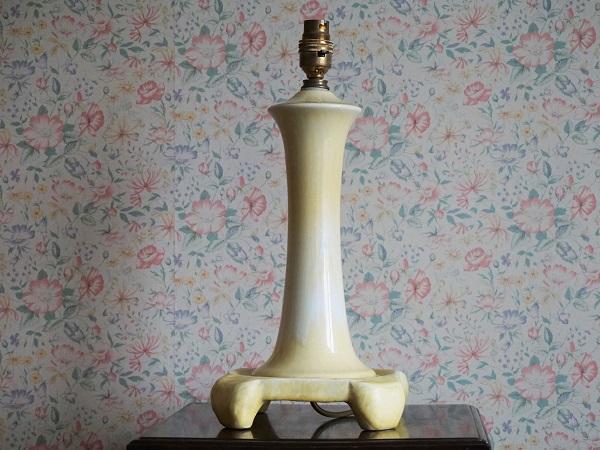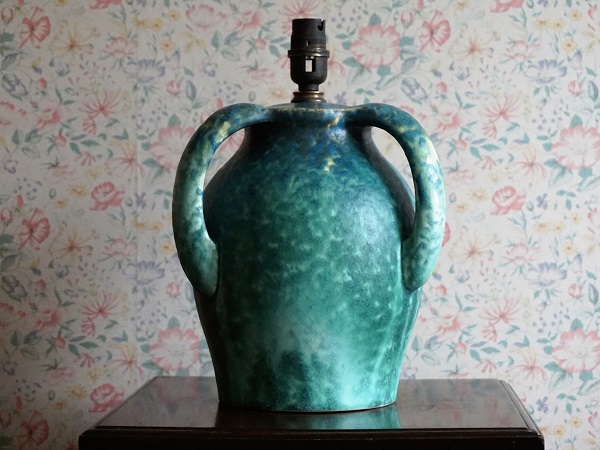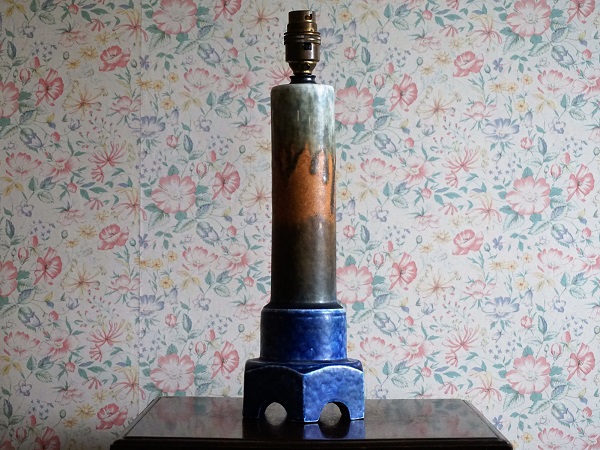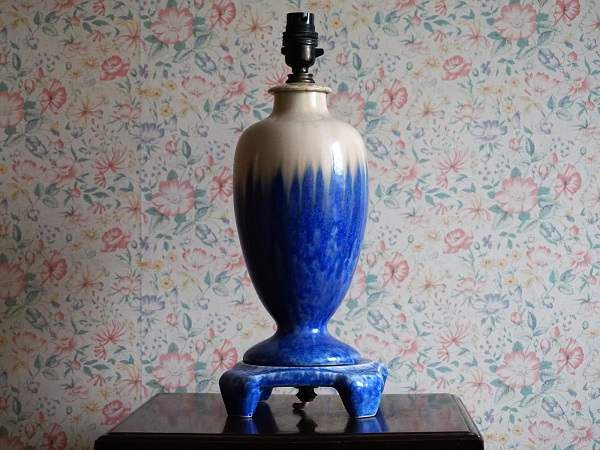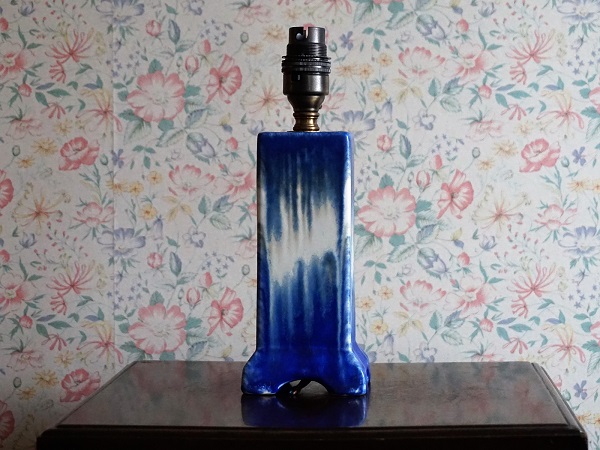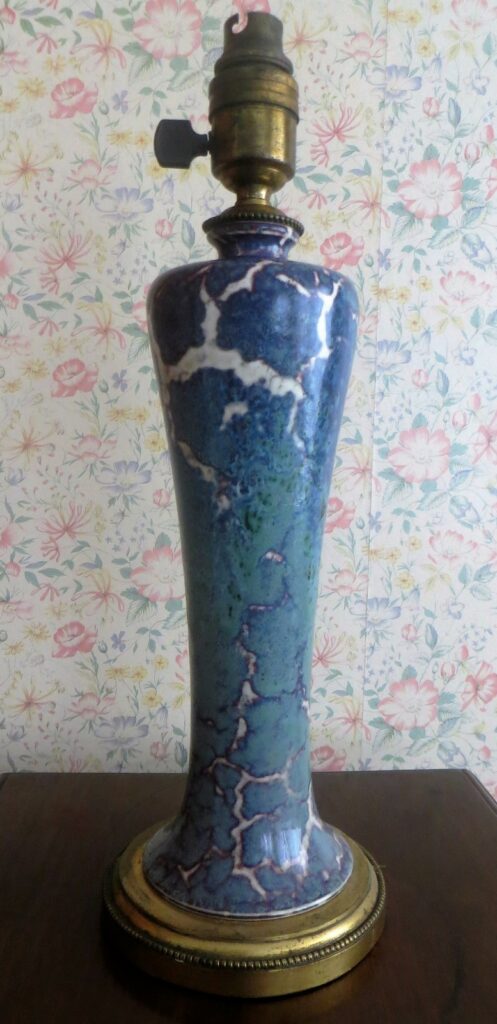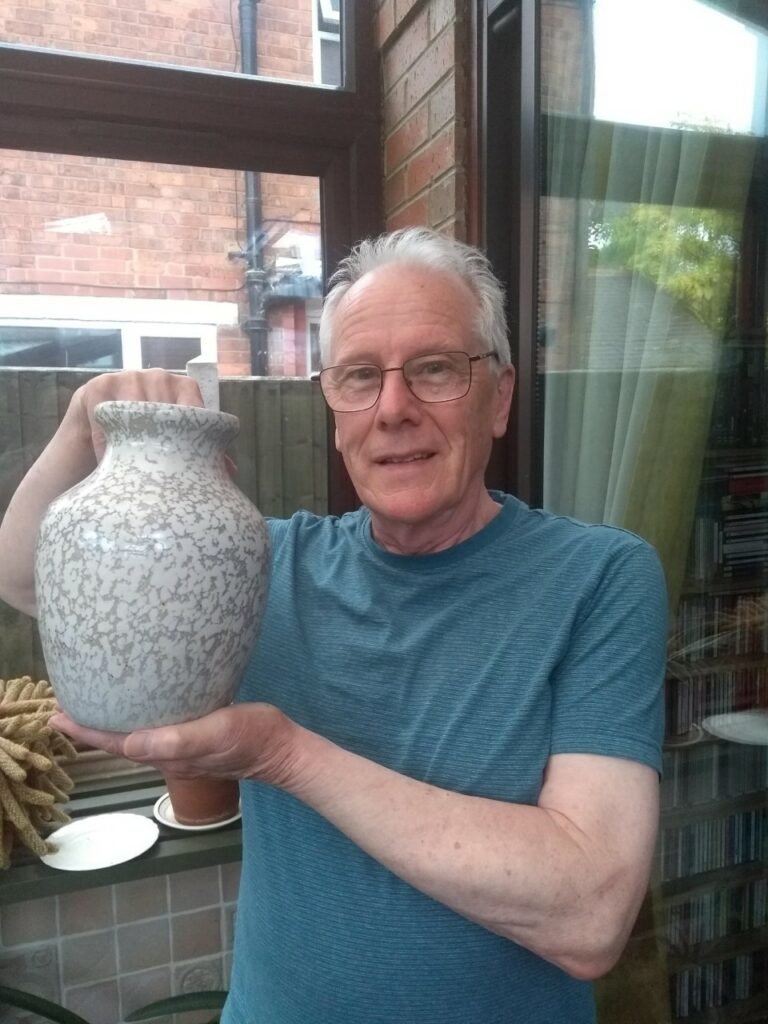Let There Be Light
The Ruskin Pottery reflected the development of domestic lighting in the early twentieth century. Their 1905 catalogue included two stands for oil lamps (No. 60 13 1/2 inches high and No.65 9 1/2 inches high). Neither are known in examples and they were quickly deleted from the firm’s catalogue. Candlesticks were made throughout the lifetime of the pottery. The 1905 catalogue has two designs (No.18 6 3/4 inches high and No.106 6 3/4 inches high which has a smaller version included in the Trinket set No.232). Number 106 became the standard version and examples date from before 1905, bearing the WHT mark, to the early 1920s exhibiting a range of soufflé glazes occasionally with simple decoration. Often these were sold in pairs. A version with the top re-designed in the 1920s was made using lustre glazes of the period.
Electricity started to become available in some houses and it was introduced gradually throughout the country and a need for table lamps was identified. A design problem for ceramic manufactures was the need to find a away to exit the cable. Two early solutions to this are illustrated where a standard Ruskin vase was adapted by metal fittings and at the Ruskin Pottery lamp bases made from about 1912 to the early 1920s were made by joining a metal cap to a metal base from which the cable exited using a central metal rod locking the two onto a vase which was manufactured with a central hole in the base to take the rod. Ruskin vase forms of columnar shape lent themselves well to this format (see photo).
The demand for lamps grew as more people were installing electric lighting in their homes. When Ruskin introduced pottery stands for their vases in 1925 it was realised that these could be designed as bases to allow the cable to exit and table lamps started to be produced using a number of vase shapes as well as a few new designs. The New High Temperature glazes were employed so such products can be seen as luxury items designed to appeal to well off customers. The new mat and crystalline glazes developed in 1927 by Howson Taylor also began to appear in 1927 and may have been intended as a less expensive option.
A radical change in lamp base design in the late 1920s was the introduction of a range of specially designed geometric shapes often with integrated arcaded bases as well as ones which had moulded separate square or triangular bases. These embraced the new glazes often in dramatic banded effects. How well these sold is uncertain as examples without their metal bulb holders regularly turn up and a stack of unglazed pieces can be seen in the biscuit warehouse photograph taken after the close of the pottery. Two hexagonal moulded candlesticks were also introduced using the new glazes and a few examples also incorporate flambe glazes probable being made in 1934 using leftover stock from the biscuit warehouse.
The new range was promoted using the coloured post cards of the late 1920s which featured a hexagonal lamp on an integrated base and a triangular one with a stepped base as well as both sizes of hexagonal candle sticks. Two lamps were illustrated in a feature on electric light fittings in The Studio Yearbook for 1930.
